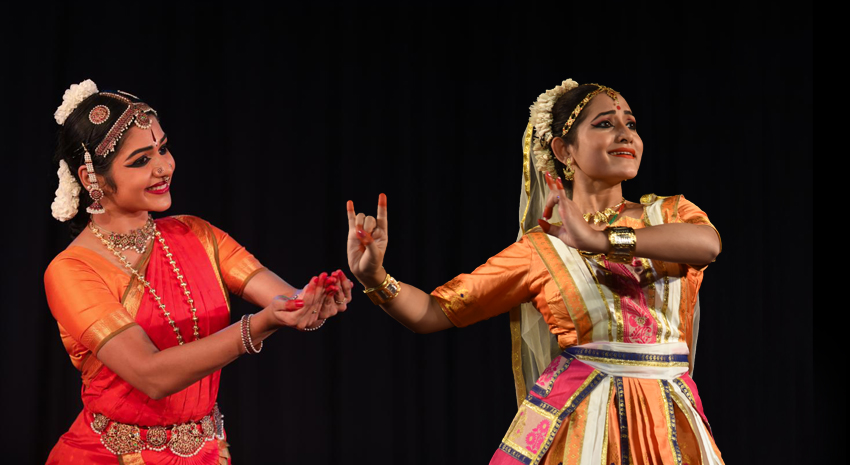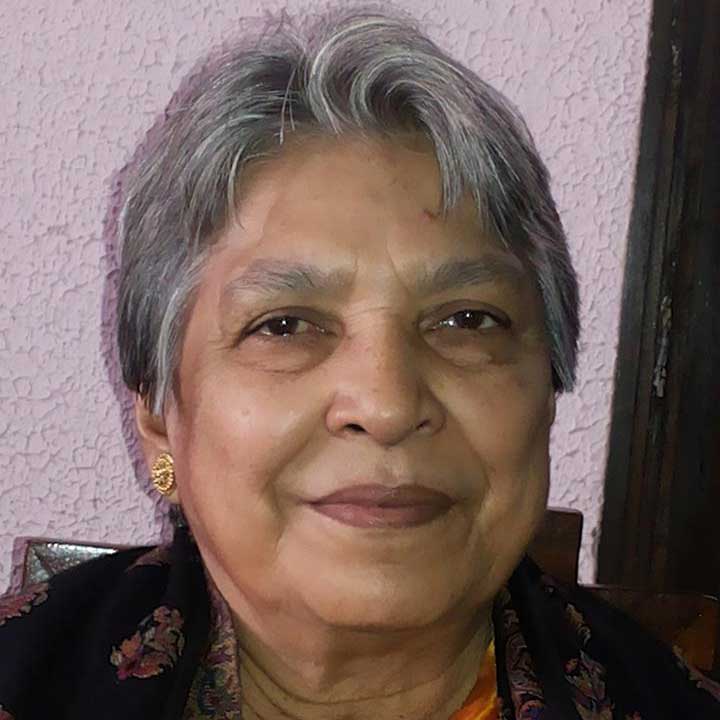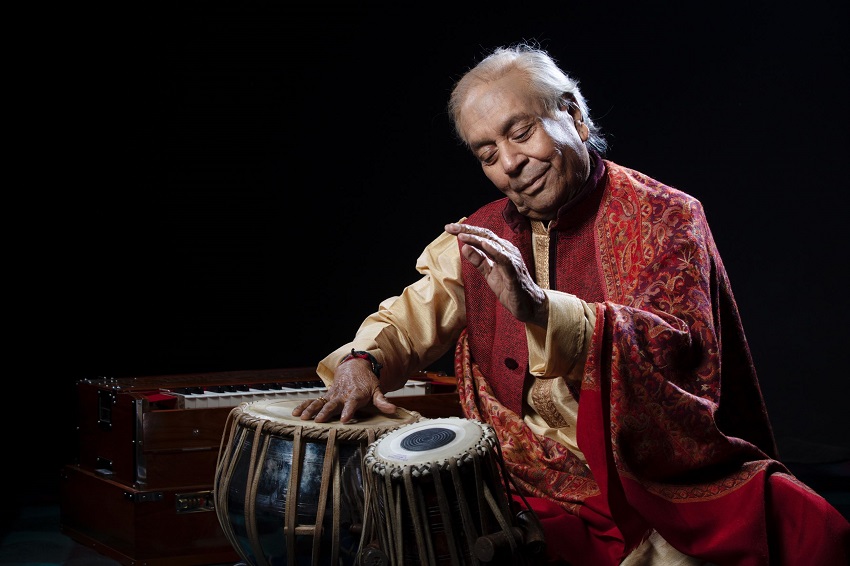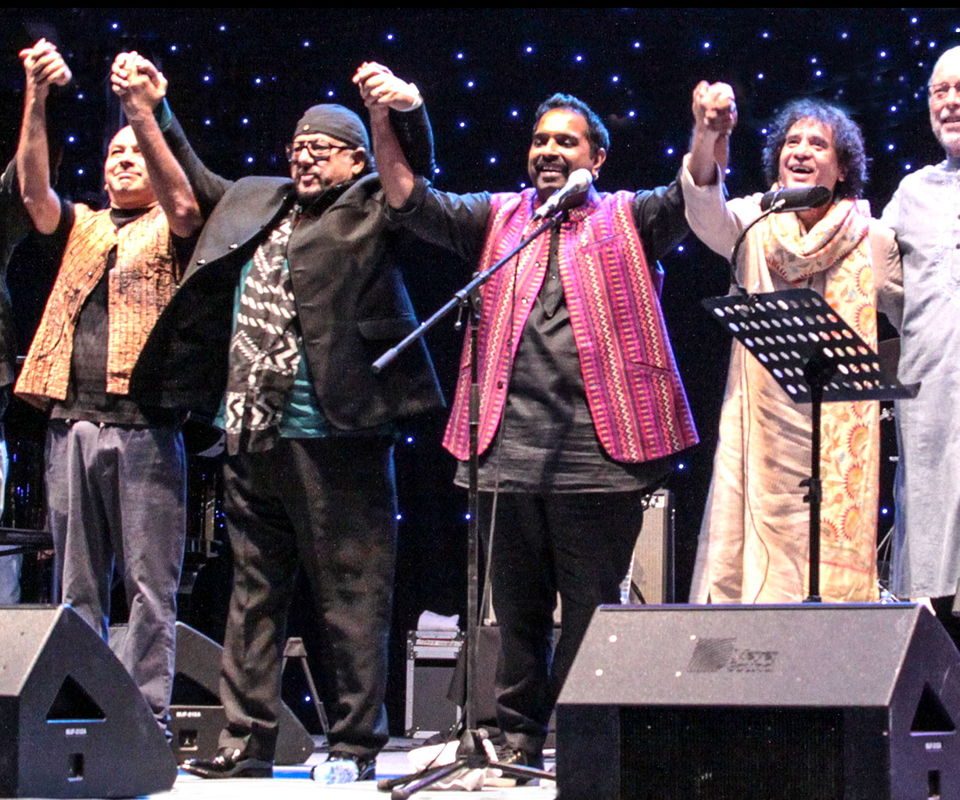Nava Pallava – young dancers’ festival was held at Daga Nikunj by Odissi exponent Sharmila Biswas to give a platform to young and upcoming performers, who are more often than not left to the mercies of organizers’ exploitation.
Sharmila Biswas co-presented two young dancers Meenakshi Medhi in Sattriya Dance and Shruthipriya Ravi in Bharatanatyam.
Meenakshi Medhi is a rising star in Sattriya dance. Her flair in Sattriya had been nurtured by Adhyapak Jibanjit Dutta and Sangeet Natak Akademi Awardee Adhyapak Haricharan Bhuyan Borbayan. Apart from learning Sattriya dance, Meenakshi has completed her Visharad in Bharatanatyam too. Meenakshi is a solo artist, performing across India for over a decade now. In 2013, she created ‘Satkara-Unleashing the Spirit of Sattriya’, a society dedicated to the propagation of Sattriya. She currently resides in Delhi and organizes regular events and workshops to promote Sattriya.
Meenakshi Medhi started her dance recital at Daga Nikunj with Ramdani of Hajowalia Saali Naas followed by Slokabhinaya- on ‘Sarata Sasanka Kara…..’ from Keli Gopal Nat written by Mahapurush Srimanta Sankaradeva and ended her recital with an abhinaya based item on Putana badh and Bakasur Badh.
Saali Naas was soft and graceful based on purely lashya style. The exponent of Saali Naas was Mahapurush Madhavadeva. Ramdani was an invocatory as well as the introductory part of the dance. It was a pure dance performed to rhythmic sound syllables of khol based on Suta Tal and Thukoni Tal.
Rasikas were treated to Slokabhinaya- on ‘Sarata Sasanka Kara…..’ from Keli Gopal Nat written by Mahapurush Srimanta Sankaradeva in raag Sareng.
Abhinaya was on ‘Putana badh’ and “Bakasur Badh”-the killing of Putana and Bakasur. Demoness Putana was assigned the task of killing baby Krishna by giving him suck on her poisoned breast, by Kamsa -the tyrant ruler of Vrishni kingdom, who, it was prophesied, would be killed by Krishna. But Krishna drew out her life-breath by his suck divine suck. It was a boon in disguise. Putana achieved salvation by being killed in the hands of Krishna. Raag- Gauri and Ek taal plus Jati taal were used in the delineation of this classical tale, with its eternal message. Sattriya Dance, which has been given classical state, is yet a fledging, growing at a fast rate. The stances of the form have been neatly presented by Meenakshi.
The second artist Shruthipriya Ravi, is a disciple of Bharatanatyam exponent Nithyakalyani Vaidyanathan. She was initiated into the art of Bharatanatyam by J. Suryanarayana Murthy, at the age of 4. In addition, Shruthipriya Ravi is also refining her ‘Abhinayam’ and undergoing other advanced training under the expert guidance of guru Bragha Bessell. In addition to her gurus’ productions. She has had the great blessing of working with Prof. C. V. Chandrasekhar, Pandit Shri Birju Maharaj, Radha Ramanathan, Malavika Sarukkai, Savitri Jagannatha Rao, Jayanthi Subramaniam, Anitha Guha, Jaikishore Mosalikanti, Narthaki Nataraj and Ambika Buch. She is now a part of Spanda Dance Company – led by Leela Samson.
[adrotate group=”9″]
For this festival, Shruthipriya performed Yati- Aananda Koothaadum. The piece was not only very absorbing, but it was also very educative too. She took up the 5 kinds of Yati in Natya Sastra. Namely:
- Sama yathi – equal (same)
- Mridanga Yathi – (small to big to small)
- Damaru Yati – (big to small to big)
- Gopucha Yati – (big to small) – Cow’s tail
- Strothovaha yati – (small to big)
The theermanams/the ending adavus in Bharatanatyam follow one of these patterns. If it is sama yathi – the ending will be -kita tathkathari kitathom, Kitathakatharikitathom and kitathakatharikitathom.
Likewise If it’s Mridanga yati – the ending will be like Kitathaka tharikitathom, tha Kitathaka tharikitathom, Kitathaka tharikitathom.
In this piece, the dancer imitated patterns and taalas that originated from the feet of the Lord Nataraja and was performed by Him. The dancer in the role of the devotee was also able to come up with small stories to relate to every Yati; like: Sama yati showed the Lord treating Devas and Asuras equally by drinking the poison during the churning of the Mandara mountain. Similarly, the devotee witnessed his Lord performing with patterns with Mridanga Yati, where Nandi, the vehicle of Lord Shiva played the mridangam with Lord Shiva dancing to that rhythm.
[adrotate group=”9″]
Damaru Yati pointed to the Asuras that they don’t need to be afraid when the Lord presents himself in front of them. The sound of the damaru is enough to rouse fear. Nataraja dances in the shape of the Damaru. In Gopucha Yati, Nandi not only plays the mridangam, but also moves along with the lord. When Nandi moves, his tail goes here and there. The Lord matches his moves based on the movements of Nandi’s tail. Strotovaha Yati, showed the Lord with his adornments- the moon on one side and Ganges on the other. Lord Shiva beautifully performs to match the gracefulness of the Ganges.
The dancer devotee was ecstatic watching the Lord performing various moves according to the respective pattern/yati. The piece was presented in chaste Kalakshetra style of Bharatanatyam as resurrected by Rukmini Devi Arundale when she made the form accessible to women of upper caste.










